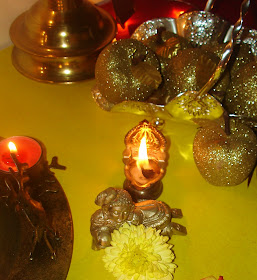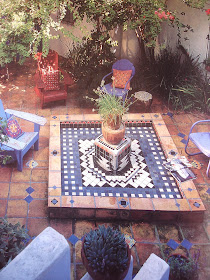WISH YOU A VERY VERY HAPPY DIWALI. MAY THIS DIWALI BRING IN LOADS AND LOADS OF HAPPINESS THROUGH HEALTH & WEALTH.



 Inspired by the same....I have created a diwali inspired decor for your living rooms. Please take a look...
Inspired by the same....I have created a diwali inspired decor for your living rooms. Please take a look...


 Inspired by the same....I have created a diwali inspired decor for your living rooms. Please take a look...
Inspired by the same....I have created a diwali inspired decor for your living rooms. Please take a look...






(Photo Courtesy: Click here)
















 Have a great day ahead!!!!!!!
Have a great day ahead!!!!!!!
 This is a simple picture of a terracotta duck against a grass background that I captured on my tour to Mangalore. If I had to pick out my colour palette from this picture.... then it would be.....Shades and tints of green and ofcourse terracotta brown. It is very important to note the proportions of the colour. How much of what colour is in the picture?. In this picture, the proportion of green colour is more than that of brown. Green is acting as a background colour. Keeping all this in mind, I have created this picture from my architectural software. Please do not mind the slight difference in the colours as the 3D image differs slightly fromt the intended colours.
This is a simple picture of a terracotta duck against a grass background that I captured on my tour to Mangalore. If I had to pick out my colour palette from this picture.... then it would be.....Shades and tints of green and ofcourse terracotta brown. It is very important to note the proportions of the colour. How much of what colour is in the picture?. In this picture, the proportion of green colour is more than that of brown. Green is acting as a background colour. Keeping all this in mind, I have created this picture from my architectural software. Please do not mind the slight difference in the colours as the 3D image differs slightly fromt the intended colours.


Sri Varadaraja Swamy Temple
This temple was constructed by the King Vishnuvardhan. His mother was blind and Ramanuja requested him to take his mother to Kanchipuram Varadarajaswamy temple for curing her blindness. As she was very old for travel and Sri Varadaraja came in the dream of the king to construct one temple in Maddur itself. The king got sculpture craftsmen from Kanchipuram and created the idol of Sri Varadaraja. After the installation of the idol, a mandala pooja (48 days pooja) was done to the God. On the forty eighth day when the king's mother came to worship to the God her eye sight was restored. And henceforth the God got another name as "Nethra Narayanan". (text courtesy: Wikipedia)
“You can’t wait for inspiration, you have to go after it with a club.” — Jack London
I so truly believe this quote....and religiously follow it too.....
MY INSPIRATIONS FROM MADDUR.........
For a simple country decor, get inspired by this turquoise blue country house.

 look at the display of colours and the lovely textures here. Imagine using them in your decor......
look at the display of colours and the lovely textures here. Imagine using them in your decor......



I hope you liked them......please send in your comments...




 Method:
Method:VOILA !!!!!!!!!!!!!!!!your vases are ready and it takes only a few minutes..........LITERALLY!!!!
Please write to me if you have any queries before doing this.